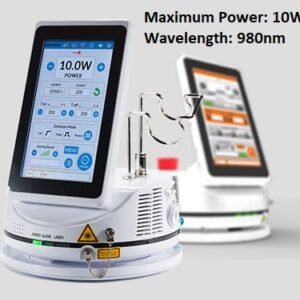Laser Therapy following Disc Herniation
Disc herniation refers to a problem with one of the rubbery cushions (disks) that sit between the bones (vertebrae) that stack to make your spine.
A herniated disk, which can occur in any part of the spine, most often occurs in the lower back. Depending on where the herniated disk is, it can result in pain, numbness, or weakness in an arm or leg.
Disc herniation is most often the result of gradual, ageing-related wear and tear called disk degeneration. As people age, the discs become less flexible and more prone to tearing or rupturing with even a minor strain or twist.
Most people can’t pinpoint the cause of their herniated disk. Sometimes, using the back muscles instead of the leg and thigh muscles to lift heavy objects can lead to a herniated disk, as can twisting and turning while lifting. Rarely, a traumatic event such as a fall or a blow to the back is the cause.
The symptoms of this issue depending on where the disk is situated and whether the disk is pressing on a nerve. Herniated disks usually affect one side of the body.
Also, You can have a Disc herniation without symptoms. You might not know you have it unless it shows up on a spinal image. Generally speaking, these are the most common signs of Disc Herniation.
Arm or leg pain. If your herniated disc is in your lower back, besides pain in your lower back, you’ll typically feel pain in your buttocks, thigh and calf. You might have pain in part of the foot as well.
For a Disk herniation in your neck, you’ll typically feel the most pain in your shoulder and arm. This pain might shoot into your arm or leg when you cough, sneeze or move into certain positions. Pain is often described as sharp or burning.
Numbness or tingling. People who have a herniated disk often have radiating numbness or tingling in the body part served by the affected nerves.
Weakness. Muscles served by the affected nerves tend to weaken. This can cause you to stumble, or affect your ability to lift or hold items.
Treatment options for this problem are various but it seems that Laser Therapy is among the best treatment options since it provides pain reduction, especially for patients seeking treatment without the use of drugs or surgery. It can also be used alone or in combination with other treatments recommended by specialists.
It is noteworthy, however, that the quality of the laser machine used for treatment has a direct impact on recovery quality and duration.
Relatedly, the Physiotherapy Diode Laser System. SIFLASER-1.41 has been recurrently used by a number of specialists as it proved its high efficacy in treating such an issue.
Indeed, this Laser therapy machine has a wide range of clinical applications, including painful low back issues such as Low Back Disc Herniation.
Unlike many pharmacological treatments that mask pain or only address the symptoms of disease, Laser Therapy treats the underlying condition or pathology to promote healing. This means that the treatments are effective and the benefits of Laser Therapy are long-lasting.
To explain in more detail, The device is targeted haemoglobin and cytochrome c oxidase. So, in sharp contrast to “Cold lasers” which provide no feeling or sensation, high power diode laser therapy will provide a warm and soothing feeling which is the exact thing requested from those patients suffering from Low Back Disc Herniation.
The pressure and swelling of the nerves at the end of the spinal column can lead to paralysis and other permanent impairments if treatment is delayed. Emergency medical treatment, which may include testing and surgery, is needed if these symptoms occur.
Luckily, Laser therapy has been developed to provide the exact needed diagnostic and surgical services. Accordingly, patients with Low Back Disc Degeneration can get reassured and less sensitive to pain and swelling as long as SIFLASER-1.41 is specifically designed to provide them with an all-encompassing treatment that will effectively restore their physical function and life comfort.
Reference: Herniated disk
Disclaimer: Although the information we provide is used by different doctors and medical staff to perform their procedures and clinical applications, the information contained in this article is for consideration only. SIFSOF is not responsible neither for the misuse of the device nor for the wrong or random generalizability of the device in all clinical applications or procedures mentioned in our articles. Users must have the proper training and skills to perform the procedure with each Laser system.
The products mentioned in this article are only for sale to medical staff (doctors, nurses, certified practitioners, etc.) or to private users assisted by or under the supervision of a medical professional.

